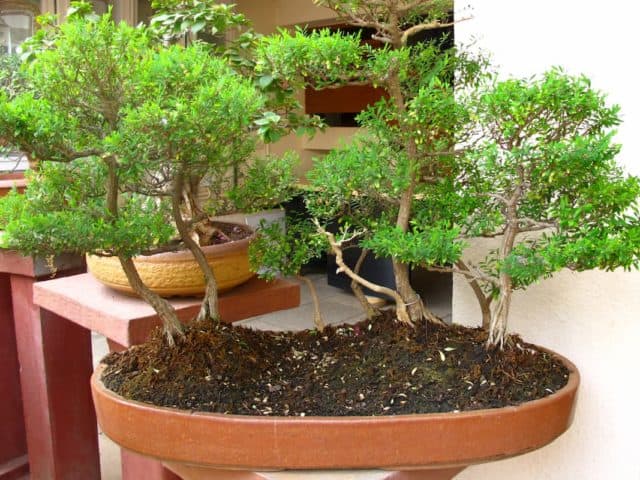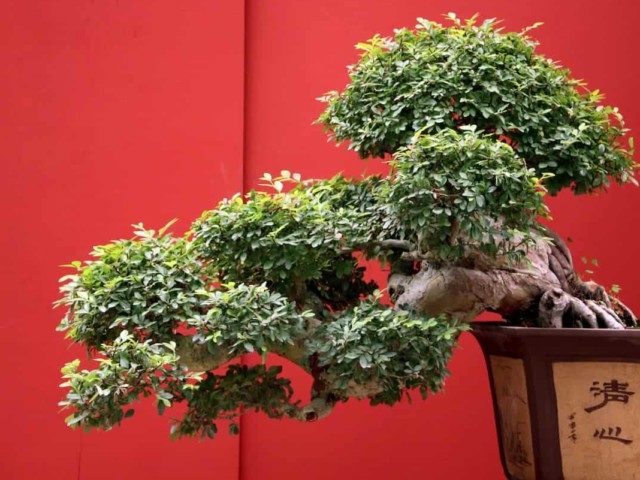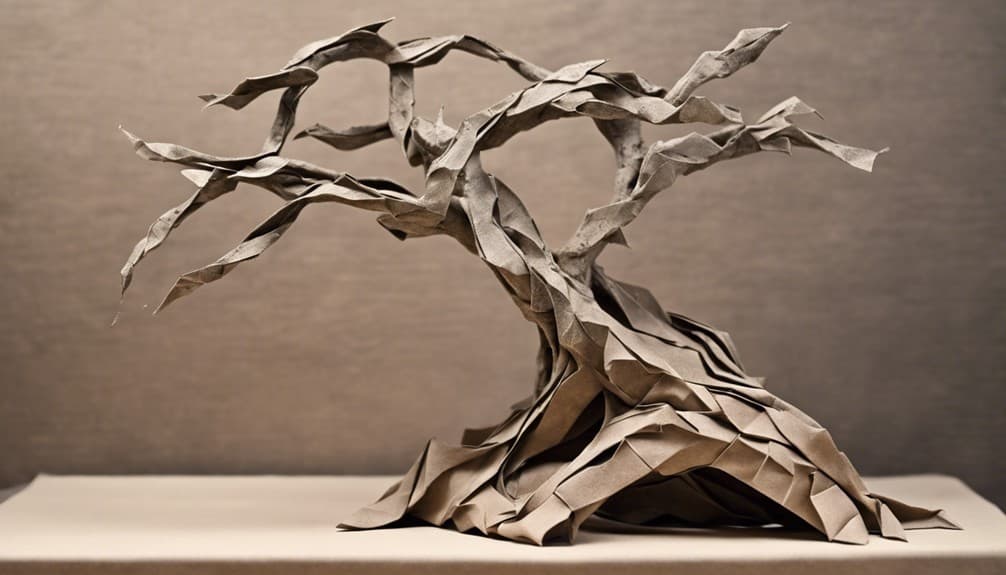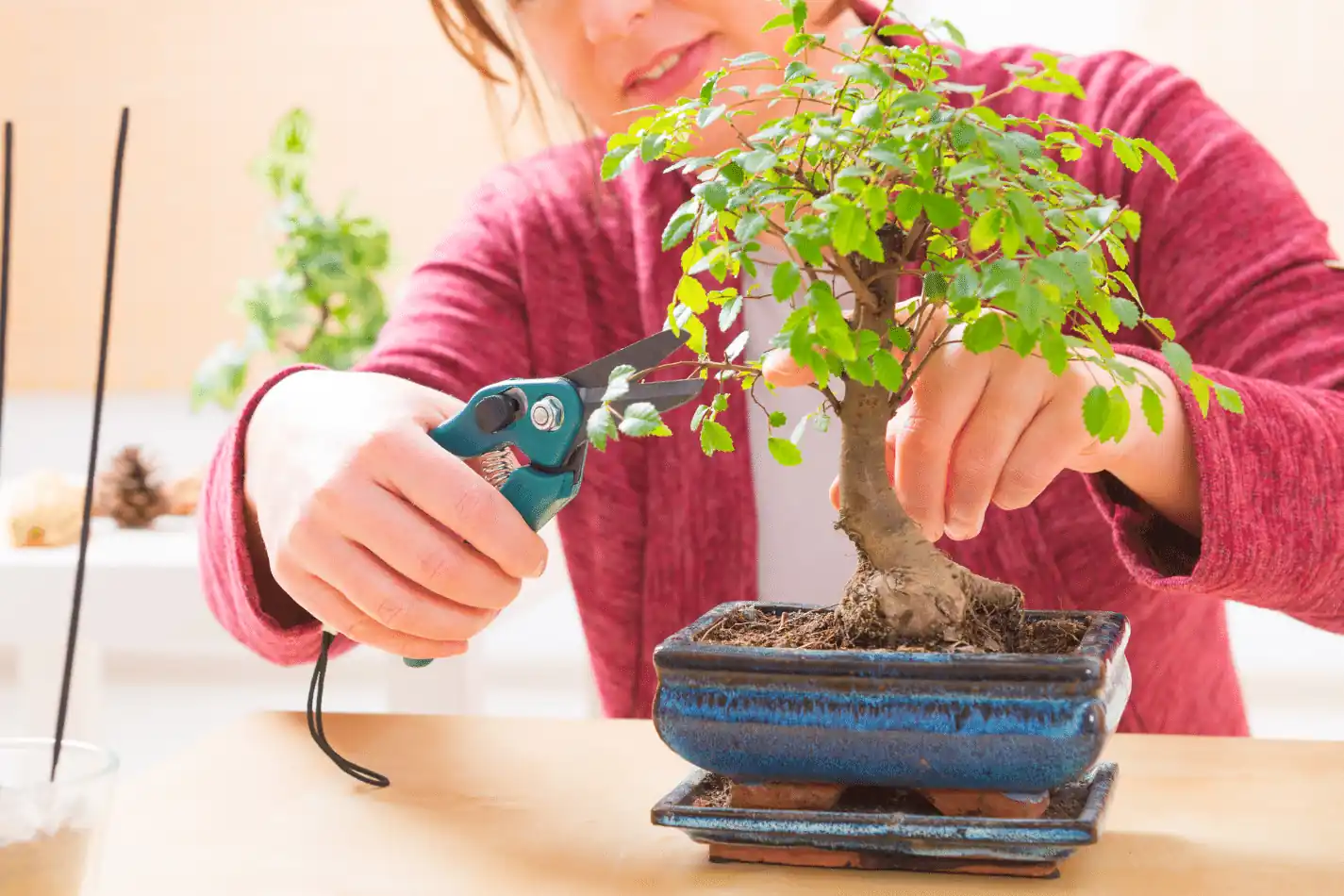Growing a bonsai is both stressful and relaxing, which is why many people take up the hobby if you live a stressful day to day life the simple needs of a bonsai can be all you need.
However, as you tend to your bonsai it will experience changes, and much like a teenager tired of their room, your bonsai will grow too big for its pot. When this happens, there are three key things that you will need to know about repotting your bonsai.
The first thing to know is that you may have to buy a new pot, as the tree needs to spread its roots, while the roots of your tree will give you a clear sign of what you should be doing. Many people think that their bonsai are too sensitive to repot, this is the third thing you will need to know, if you do not repot your bonsai tree it will stop growing and eventually die.
Of course, not all trees are the same and your bonsai may still have a few years left to grow in the pot that you have provided. Many people think that their trees should stop growing, which only causes early death for trees that could have easily reached an ancient age.
Knowing when to re-pot, how to re-pot, and what to do after repotting are all things you need to know as a bonsai owner.
Bonsai owners all need these things in their lives, and we recommend your read closely to ensure the best growth for your bonsai!
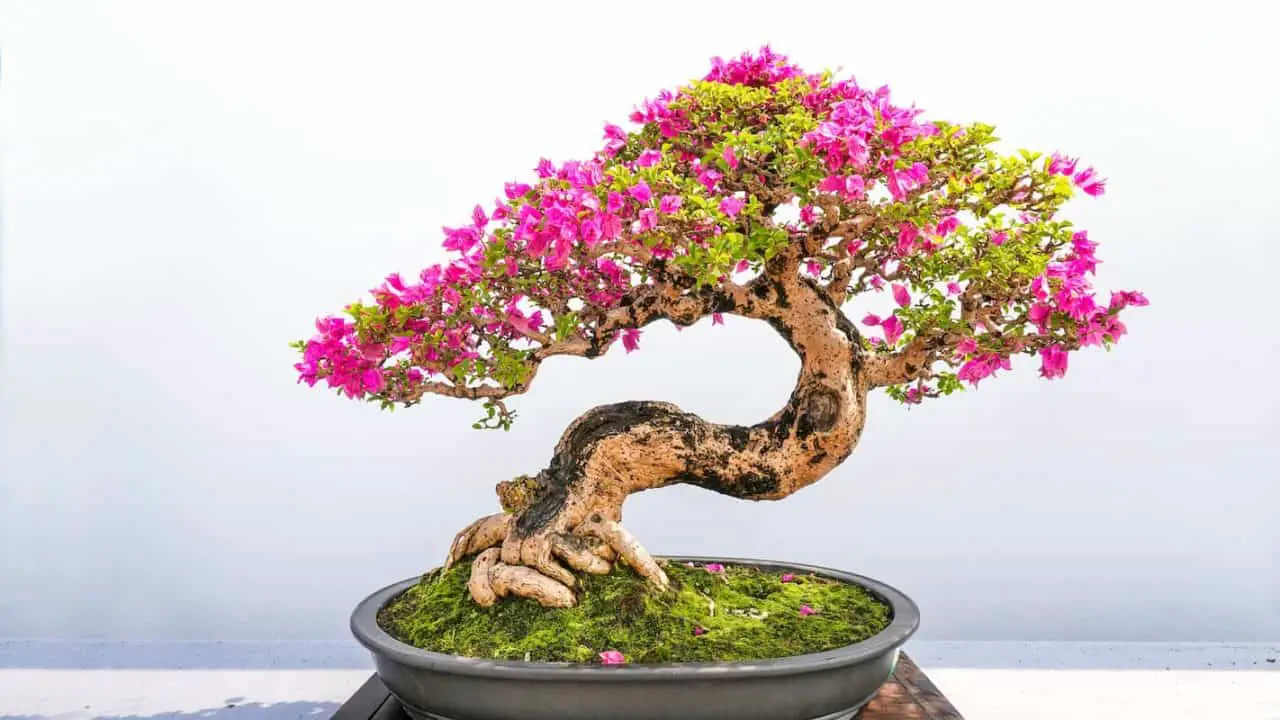
How do you know when your bonsai needs repotting?
Knowing that you may need to repot your bonsai and knowing when to do it are two entirely different things, and many people make the mistake of thinking that the will have clear signs.
Unfortunately, bonsai care means doing a lot of things that no one ever suspects they would be doing to a tree. Some of the weirdest care needs to be taken when you are checking if your bonsai needs to be repotted.
When you lift the bonsai tree out of its current pot and all the soil in the pot gets lifted out and you can see that the tree roots are circling the pot it is a clear sign. You will need to repot your tree in something larger or do preventative care to allow the tree to continue to grow.
This needs to be done because the tree roots grow a lot faster than the rest of the tree, and once the tree has reached the limits of what it can do with its roots it will simply stop growing.
Therefore, you see some of the oldest bonsai trees in the world in the largest possible pots that can still be lifted, with the oldest living bonsai in a pot that weighs a few tons.
How Do You Know When Your Bonsai Needs Repotting
There are exactly three big things I think you should know about repotting a bonsai, you need to read this before, during, and after the procedure.
Not only will this prepare you mentally, but it may save the life of your bonsai when you already have everything ready.
You may need to use a larger pot
Many bonsai owners want to keep their trees in the same small pot for the whole life of the tree, however, this may do more danger than any good.
When you simply lift and repot the tree back into the same pot you will be trimming some roots, however, the main roots of the tree will stay intact.
For every season that the tree undergoes and stays healthy these main roots will grow larger and stronger.
You may be able to cut them shorter to help the tree stay in one pot, but the roots will eventually require that you plant the tree into something that fits it a bit more naturally.
Doing this will allow your bonsai to experience a boost in certain growth areas as well, usually in every way that matters.
The roots will circle the pot
The first time you repot your bonsai chances are you will be severely freaked out by the look of the roots in the bot.
This is because the roots will have grown to the exact shape of the pot, seeking out every little piece of nutrient it can possibly receive from the soil that you have provided it.
Once you have lifted the tree from the pot you will see what bonsai lovers mean when they say the roots are circling.
For the untrained eye, it may look like old, gelatinous spaghetti that has gone hard in the shape of the pot they are in.
Just be sure that you are not pulling too roughly on the roots, as many of the roots will need to be left alone, trees can be quite sensitive when it comes to their roots.
Not repotting the tree will cause it to die
We’re going to keep this simple, every five or more years your bonsai should be in an entirely new pot, not just for the sake of looking good.
If you do not repot your bonsai when its roots are circling, you will cause your bonsai to die even if it receives all the water and sun that it could ever need.
Repotting is not an optional practice when it comes to bonsai trees, it is a mandatory requirement.
How do you repot a bonsai?
Now that you know why you need to repot your bonsai tree; you will need to know what the steps are to repotting the tree. Even if you are keeping it in the same pot that it already is in, it will need to be done properly.
Many trees cannot survive if their roots are entirely exposed, which is, unfortunately, something that over-eager bonsai lovers tend to do.
Finding the perfect balance is vital to having your tree love its new soil, grow into its new pot, and bloom with the brightest of green leaves.
The tools you will need
I can recommend you name brand tools that will be able to treat your bonsai like it is made from gold, however, that would not only take a lot of time, but you may also not have access to them.
This is why I am going to be recommending just the standard tools and briefly saying what you will be doing with each one.
You will need a root rake, that is used to loosen the roots and soil from the pot, while you have a scissor close by to trim the roots before repotting the tree.
The last tool I recommend you have is a chopstick or any long flat wooden stick, this is how you are going to be enticing the clumped-up soil to loosen and fall off from the roots.
Remove the tree carefully, and slowly
Now that you have the tools ready you need to start working on getting the tree out of the pot, which you will start doing by getting a root rake.
By slowly loosening the roots, from the sides, with a few delicate slices and some pulling you should be able to pull the bonsai tree completely out of the soil with its roots still intact.
Some bonsai trees may be tied down with a wire in the dirt, which you can remove with wire cutters before removing the tree.
The reason you will need to loosen the roots is owing to the way they tend to grab onto anything that they possibly can, with many trees tending to almost yell they would rather die than let go of their pots.
It is your job to move slowly and carefully, enticing the tree to be removed from its pot.
Remove most of the soil, but not all of it
Your tree should be held in your dominant hand right now, where you may see that it has completely removed all the soil from your pot.
Saving you a bit of time, no need to clean the pot if the tree roots are holding onto all the soil. With your chopstick or stick, you should now be poking at the dirt clumps that you see in the roots.
Most trees can handle the dirt being removed almost entirely, however, several trees prefer to only have most of their soil removed.
It will depend heavily on what type of tree you have and leaving soil on the tree can be the difference between the tree flourishing once it is repotted or simply losing its will to live entirely.
Mostly, you need to know there will be several minutes spent poking dirt with a stick.
Choose a new pot or reuse the old one
This step is probably the most important and one that you won’t fully be able to decide on until you see how badly the roots are circling.
If the tree has only just started circling it can be quite easy to reuse the old pot, after some trimming, however, if the roots look more like spaghetti in jelly then it is time for a new pot.
Choosing a new pot is quite easy though, it should be around one inch deeper and wider in every direction than the previous pot.
This will allow the tree to grow with ease and barely notice that there is anything strange happening. You must have the perfect pot for the tree, as this one change will greatly affect the continued growth of your bonsai tree.
Add new layers of soil
Whether you are using an old pot, or a new one, you will have to start layering the soil before you plant the bonsai again.
This is where things can easily turn interesting, as you need to choose the right soil for your tree. You cannot simply use the soil you have collected from your front garden if you live in a city almost no soil you can get from the wilds will be good for your bonsai.
There are special mixes of soil that you need to mix to have a soil that will perfectly allow your bonsai to continue growing.
Having these mixes ready and going when you repot your bonsai is vital as this new mix of soil is one of the main reasons that your bonsai will experience a fresh spurt of growth after a proper repotting.
Trim some of the roots with the scissor
Just before you push the tree back into the new soil and pot you will need to have a look at the roots, even if you are using a brand-new larger pot. Trimming many of the roots that started circling is the first thing you will need to do.
As you move your way through the root system it is important to leave some of the smaller roots perfectly intact while trimming off the larger ones.
This allows the tree to soak up some freshwater still easily and safely from the soil. Larger roots may seem more important, but generally, they are often used only as channels for moisture to travel in than actual collectors of the moisture.
Replant and water the tree
After the roots, the soil, and all the trimming that you could ever need you will have to plant the bonsai tree in the fresh soil.
This can be done quite easily and should not be the most stressful situation you find yourself in.
Just put the tree and its roots in the soil and then slowly start layering up more soil around the roots. Thus, you will have done the simple task of repotting the tree.
Once this has been done you will need to water the tree, making sure that you do not add too much water. This is where the last and final process starts, the one most people usually get wrong thanks to overthinking, and too much stress about something that should not be a problem.
Then wait
After trimming, potting, soiling, covering, and everything else you need to do to repot your bonsai tree you need to wait.
The tree will not show any change of life for almost a week, in this period anything from root regrowth to nutrient bursts can happen. You will have to let all of this happen, without pouring more water or soil onto the tree.
After about two weeks your bonsai tree should have whole new foliage of leaves and new buds springing up, it is important to remember repotting should not be done during autumn or winter, but during early spring for this very reason.
The only way you will know if the repotting was successful is when new leaves have already grown. If the tree is in hibernation you may have only accomplished one thing by repotting it, which would be killing it in its sleep.
What steps need to be taken for bonsai repotting aftercare?
After you have repotted your bonsai tree, the really hard work will begin, as this is the period in which the tree experience possibly the most growth it can experience in a short period. As the bonsai owner, you must ensure it is growing properly.
After the first new batch of leaves has formed, you will need to trim off the excess, while pinching off any unwanted buds that would be forming.
After you have done this you should think back on when the last time was you did wire training and possibly add that into the schedule for your newly growing bonsai tree.
However, apart from the regular care, you may have given for your bonsai tree there is truly little that you will need to do differently once it has started growing.
This is because the tree will do what it has always done before, try to grow into a full tree instead of the miniature one I need it to be.
Final Thoughts on How Do You Know When Your Bonsai Needs Repotting
Repotting your bonsai tree is easily one of the most stressful situations that even experienced bonsai owners find themselves in. It is the act of literally uprooting the plant and putting it in a new unfamiliar place it.
Remember as much as we think of trees and plants as just another thing, they are very much alive and can experience the same amount of stress as we can.
Just be sure you don’t tell all your worldly secrets to a bonsai with a loose mouth, what happens during the repotting doesn’t always stay with the repotting.
If you are just learning about bonsai trees and looking to purchase high quality trees that will likely live longer than you then I would highly suggest checking out Bonsai Boy Trees as they are a long lasting New York business that provides trees for all price ranges!


